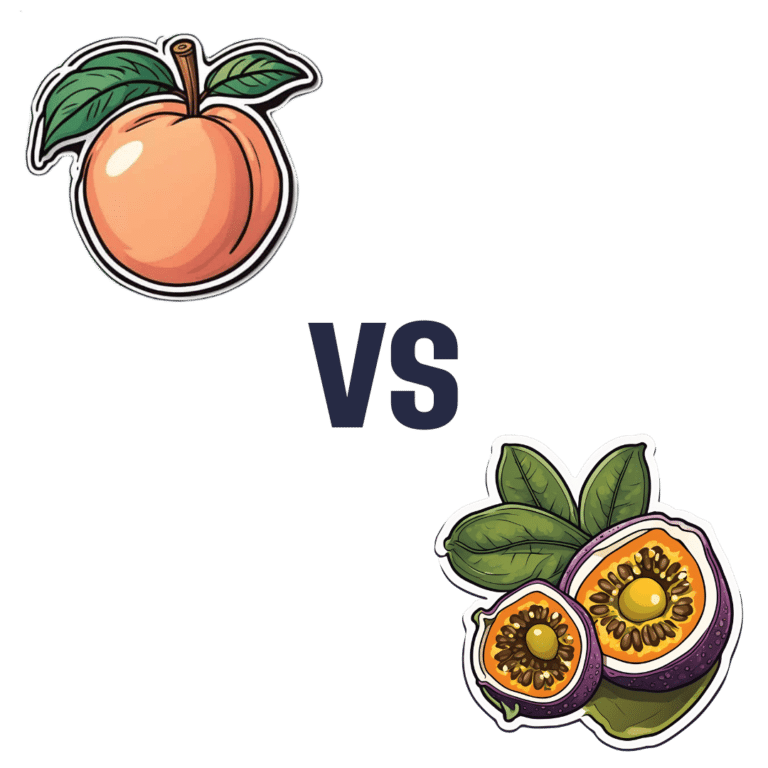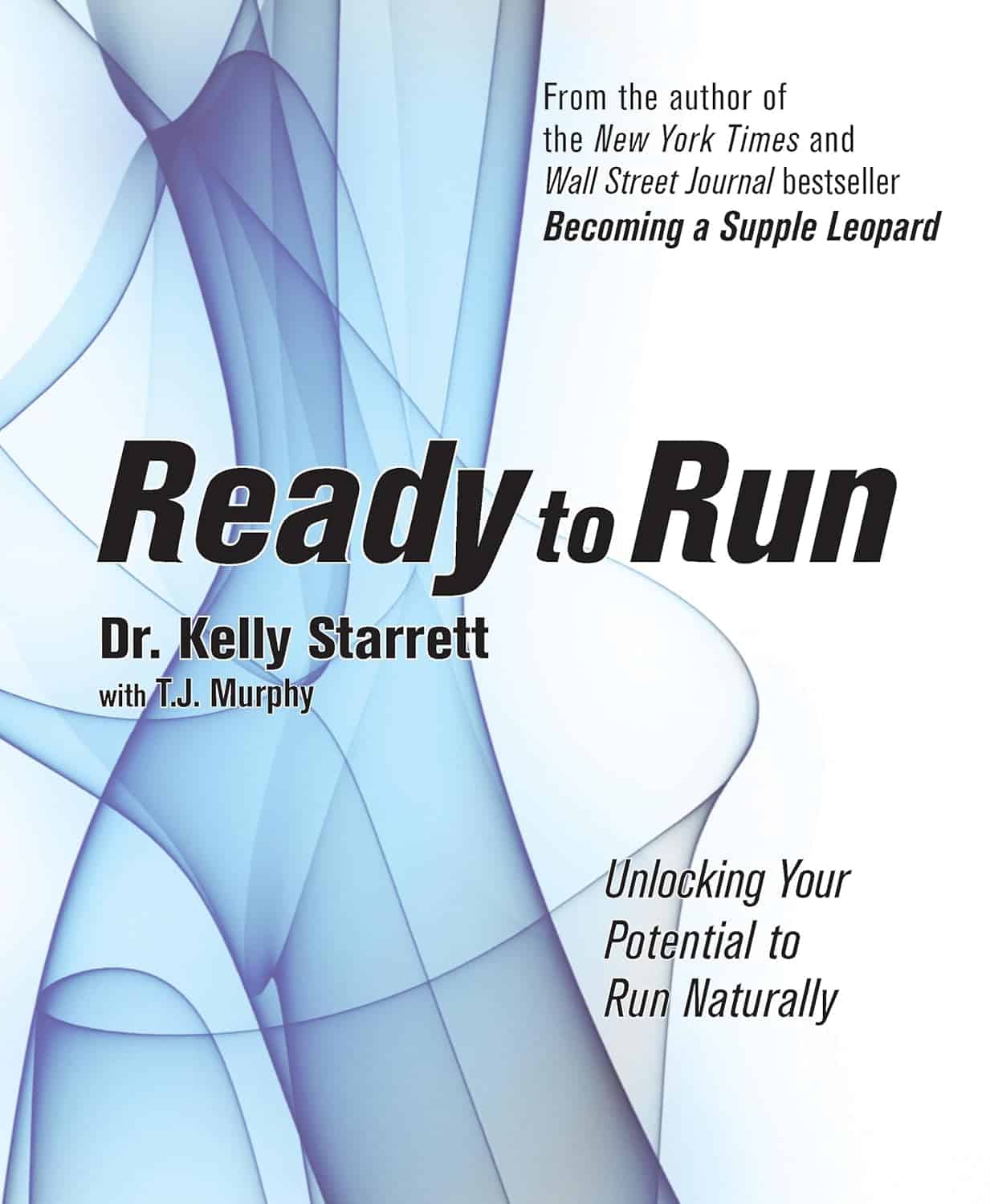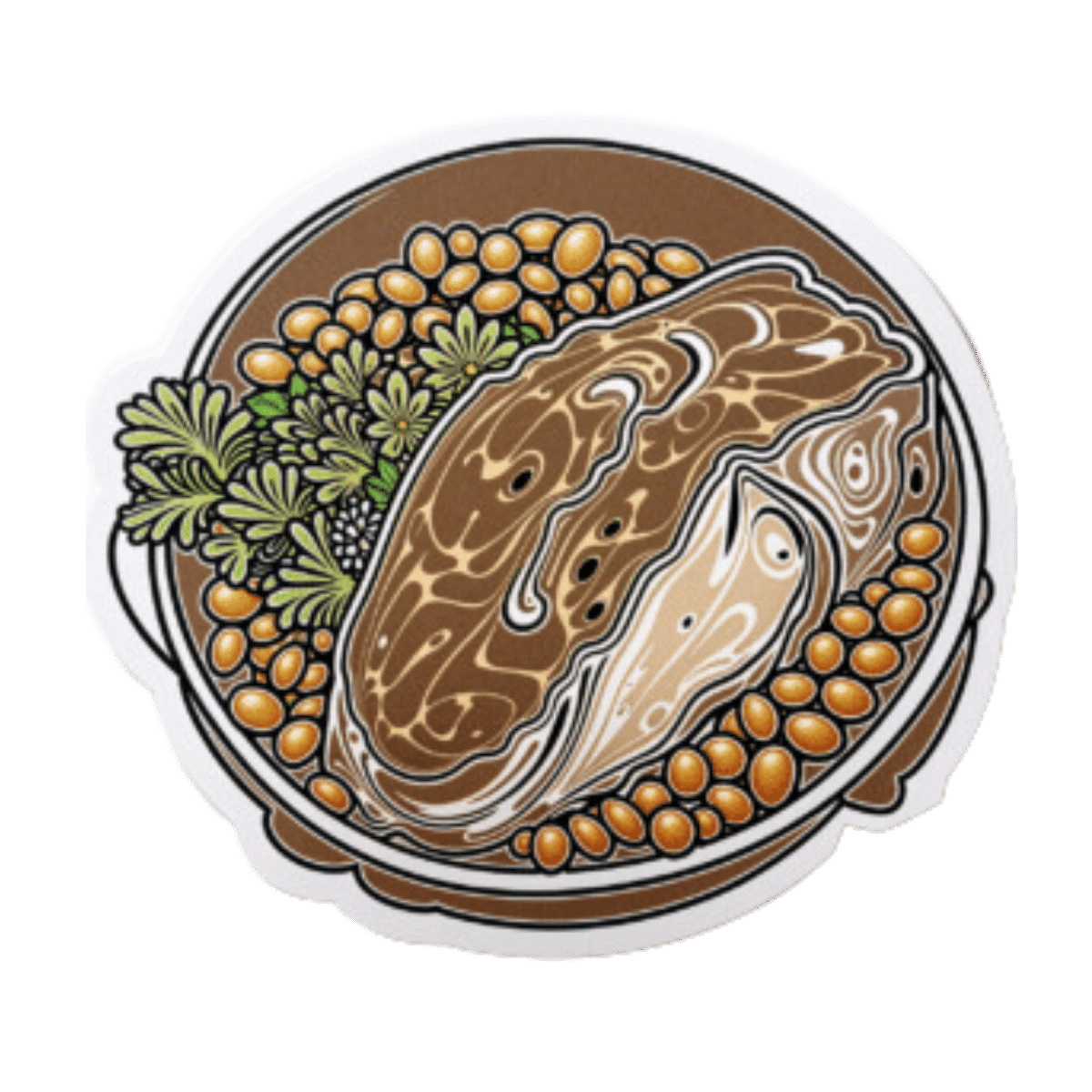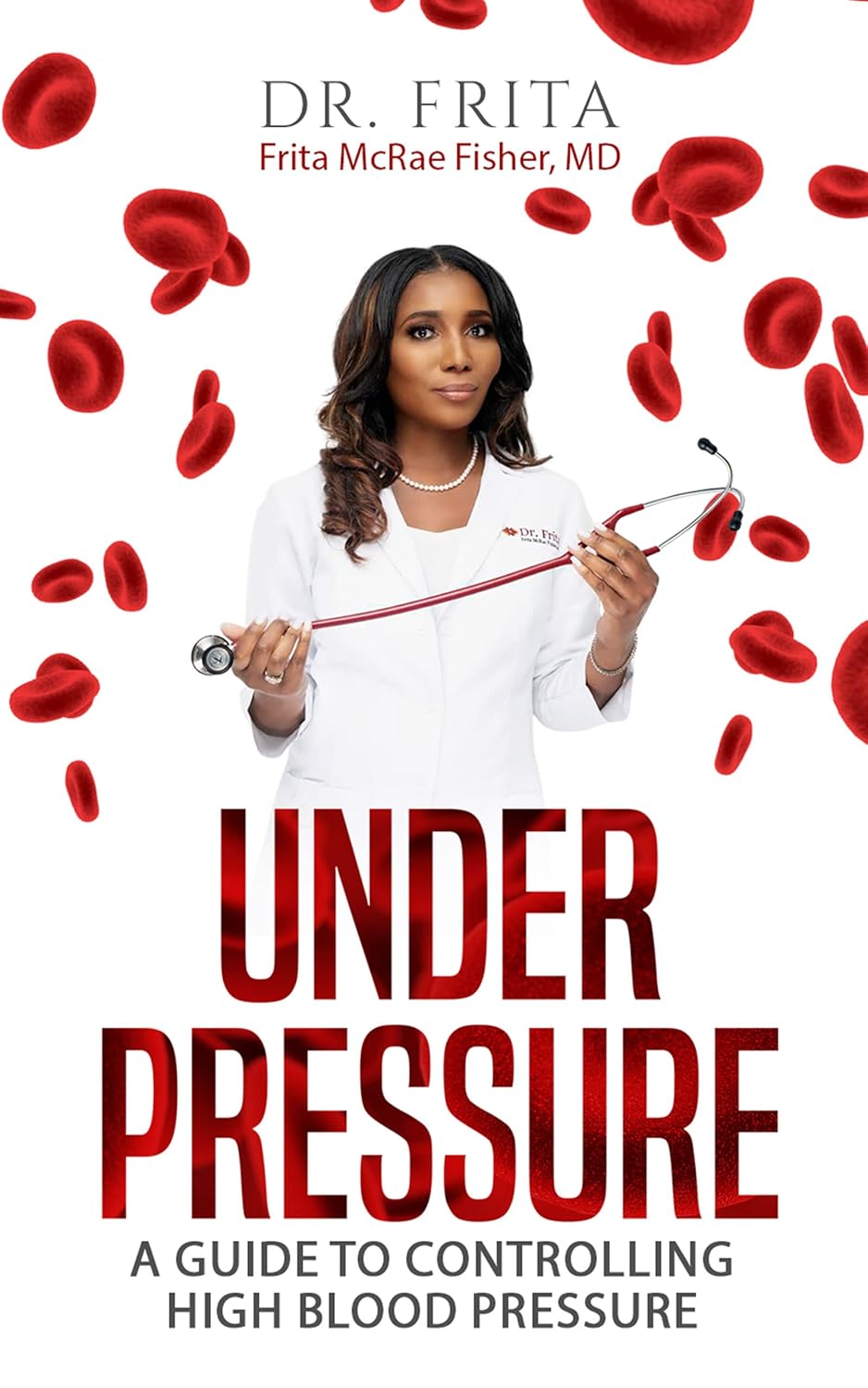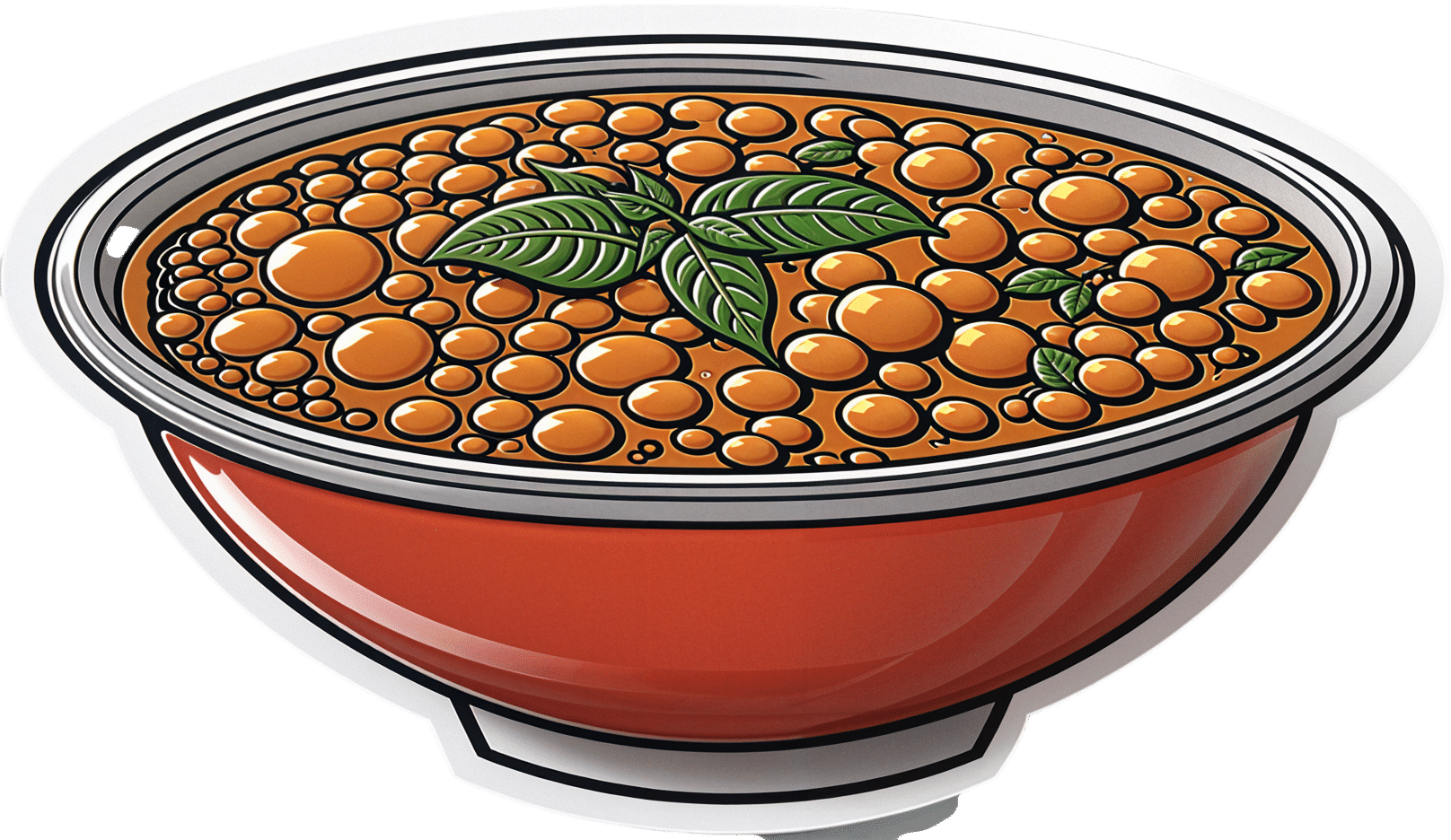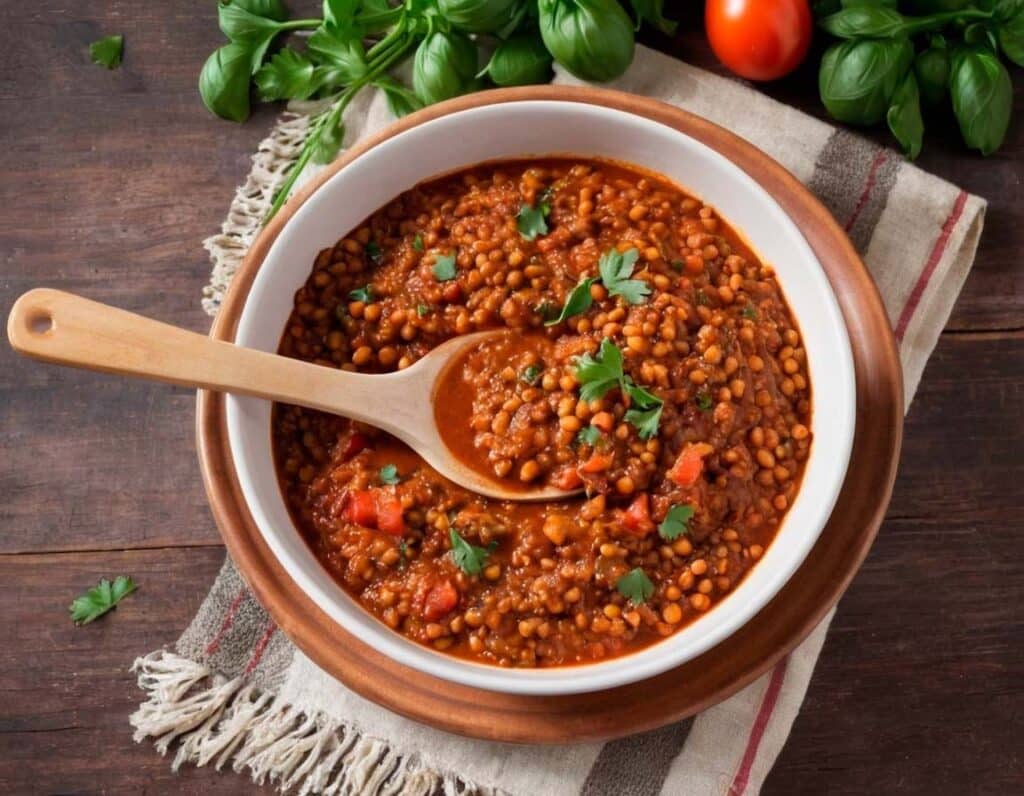
Black Coffee vs Orange Juice – Which is Healthier?
10almonds is reader-supported. We may, at no cost to you, receive a portion of sales if you purchase a product through a link in this article.
Our Verdict
When comparing black coffee to orange juice, we picked the coffee.
Why?
While this one isn’t a very like-for-like choice, it’s a choice often made, so it bears examining.
In favor of the orange juice, it has vitamins A and C and the mineral potassium, while the coffee contains no vitamins or minerals beyond trace amounts.
However, to offset that: drinking juice is one of the worst ways to consume sugar; the fruit has not only been stripped of its fiber, but also is in its most readily absorbable state (liquid), meaning that this is going to cause a blood sugar spike, which if done often can lead to insulin resistance, type 2 diabetes, non-alcoholic fatty liver disease, and more. Now, the occasional glass of orange juice (and resultant blood sugar spike) isn’t going to cause disease by itself, but everything we consume tips the scales of our health towards wellness or illness (or sometimes both, in different ways), and in this case, juice has a rather major downside that ought not be ignored.
In favor of the coffee, it has a lot of beneficial phytochemicals (mostly antioxidant polyphenols of various kinds), with no drawbacks worth mentioning unless you have a pre-existing condition of some kind.
Coffee can of course be caffeinated or decaffeinated, and we didn’t specify which here. Caffeine has some pros and cons that at worst, balance each other out, and whether or not it’s caffeinated, there’s nothing in coffee to offset the beneficial qualities of the antioxidants we mentioned before.
Obviously, in either case we are assuming consuming in moderation.
In short:
- orange juice has negatives that at least equal, if not outweigh, its positives
- coffee‘s benefits outweigh any drawbacks for most people
Want to learn more?
You might like to read:
- The Bitter Truth About Coffee (or is it?)
- Caffeine: Cognitive Enhancer Or Brain-Wrecker?
- Which Sugars Are Healthier, And Which Are Just The Same?
Take care!
Don’t Forget…
Did you arrive here from our newsletter? Don’t forget to return to the email to continue learning!
Recommended
Learn to Age Gracefully
Join the 98k+ American women taking control of their health & aging with our 100% free (and fun!) daily emails:
-
Ready to Run – by Kelly Starrett
10almonds is reader-supported. We may, at no cost to you, receive a portion of sales if you purchase a product through a link in this article.
If you’d like to get into running, and think that maybe the barriers are too great, this is the book for you.
Kelly Starrett approaches running less from an “eye of the tiger” motivational approach, and more from a physiotherapy angle.
The first couple of chapters of the book are explanatory of his philosophy, the key component of which being:
Routine maintenance on your personal running machine (i.e., your body) can be and should be performed by you.
The second (and largest) part of the book is given to his “12 Standards of Maintenance for Running“. These range from neutral feet and flat shoes, to ankle, knee, and hip mobilization exercises, to good squatting technique, and more.
After that, we have photographs and explanations of maintenance exercises that are functional for running.
The fourth and final part of the book is about dealing with injuries or medical issues that you might have.
And if you think you’re too old for it? In Starrett’s own words:
❝Problems are going to keep coming. Each one is a gift wanting to be opened—some new area of performance you didn’t know you had, or some new efficiency to be gained. The 90- to 95-year-old division of the Masters Track and Field Nationals awaits. A Lifelong commitment to solving each problem that creeps up is the ticket.❞
In short: this is the book that can get you back out doing what you perhaps thought you’d left behind you, and/or open a whole new chapter in your life.
Share This Post
-
Tuna Steak with Protein Salad
10almonds is reader-supported. We may, at no cost to you, receive a portion of sales if you purchase a product through a link in this article.
Yes, it’s protein on protein today, and it’s all healthy.
You will need (per person)
- 1 tuna steak
- 1 400g/12oz can mixed beans, drained & rinsed
- 1 tsp capers
- 2 tsp black pepper, coarse ground
- 1 red chili, chopped
- 1 lime, cut into wedges
- ½ tsp white wine vinegar
- Extra virgin olive oil, for cooking
- Garnish: chopped parsley
Method
(we suggest you read everything at least once before doing anything)
1) Put the beans in a bowl, mixing in the capers, vinegar, and 1 tsp of the black pepper
2) Gently rub a little olive oil onto each side of the tuna steak, and season with the remainder of the black pepper (as in, the other tsp, not the rest of what you have in the house).
3) Heat a ridged grill pan until hot, and then cook the tuna for around 3 minutes on each side. Do not jiggle it! Do not slide it, and definitely do not stir it. Just gently turn it over when necessary. The edges should be cooked, and the inside should still be pink (it’s easy to forget when it comes from a can, but remember tuna is usually eaten raw)
4) Serve, sprinkling with the chopped chili and garnishing with the parsley. The lime wedges go on the side for squeezing at the table.
Enjoy!
Want to learn more?
For those interested in some of the science of what we have going on today:
- Protein: How Much Do We Need, Really?
- Salmon vs Tuna – Which is Healthier?
- Cilantro vs Parsley – Which is Healthier?
- Our Top 5 Spices: How Much Is Enough For Benefits?
Take care!
Share This Post
-
Chocolate & Health
10almonds is reader-supported. We may, at no cost to you, receive a portion of sales if you purchase a product through a link in this article.
Chocolate & Health: Fact or Fiction?
“Chocolate Is Good For The Heart”
“When making chocolate chip cookies, you don’t measure using cups, you measure by heart”
…but how good is chocolate when it comes to heart health?
First, what is heart health?
A healthy heart typically has a low resting pulse rate and a strong, steady beat. This is affected strongly by exercise habits, and diet plays only a support role (can’t exercise without energy from food!).
It is also important to have blood pressure within a healthy range (with high blood pressure being a more common problem than low, so things that lower blood pressure are generally considered good).
- Flavanols, flavonoids, and polyphenols in chocolate contribute to lower blood pressure
- Dark chocolate is best for these, as milk chocolate contains much less cocoa solids and more unhelpful fats
- White chocolate contains no cocoa solids and is useless for this
- Some of the fats in most commercial chocolate can contribute to atherosclerosis which raises blood pressure and ultimately can cause heart attacks.
- If you’re diabetic, you will probably not get the usual heart-related benefits from chocolate (sorry)
The Verdict: dark chocolate, in moderation, can support good heart health.
“Chocolate Is Good For The Brain”
Chocolate has been considered a “brain food”… why?
- The brain uses more calories than any other organ (chocolate has many calories)
- The heart benefits we listed above mean improved blood flow—including to your brain
- Chocolate contains phenylethylamine, a powerful chemical that has a similar effect to amphetamines… But it’s metabolized in digestion and never makes it to the central nervous system (so basically, this one’s a miss; we had a good run with the other two, though!)
The Verdict: dark chocolate, in moderation, can support good brain health
“Chocolate Is An Aphrodisiac”
“If chocolate be the food of love, pass me that cocoa; I’m starving”
Most excitingly, chocolate contains phenylethylamine, the “molecule of love” or, more accurately, lust. It has an effect similar to amphetamines, and while we can synthesize it in the body, we can also get it from certain foods. But…
Our body is so keen to get it that most of it is metabolized directly during digestion and doesn’t make it to the brain. Also, chocolate is not as good a source as cabbage—do with that information what you will!
However!
Chocolate contains theobromine and small amounts of caffeine, both stimulants and both generally likely to improve mood; it also contains flavonoids which in turn stimulate production of nitric oxide, which is a relaxant. All in all, things that are convivial to having a good time.
On the other hand…
That relaxation comes specifically with a reduction in blood pressure—something typically considered good for the health for most people most of the time… but that means lowering blood pressure in all parts of your body, which could be the opposite of what you want in intimate moments.
Chocolate also contains zinc, which is essential for hormonal health for most people—the body uses it to produce testosterone and estrogen, respectively. Zinc supplements are popularly sold to those wishing to have more energy in general and good hormonal health in particular, and rightly so. However…
This approach requires long-term supplementation—you can’t just pop a zinc tablet / bar of chocolate / almond before bed and expect immediate results. And if your daily zinc supplementation takes the form of a 3.5oz (100g) bar of chocolate, then you may find it has more effects on your health, and not all of them good!
The Verdict: dark chocolate, in moderation, may promote “the mood”, but could be a double-edged sword when it comes to “the ability”.
“Chocolate Is Good During Menstruation”
The popular wisdom goes that chocolate is rich in iron (of which more is needed during menstruation), and indeed, if you eat 7oz (150g) of dark chocolate made with 85% cocoa, you’ll get a daily a dose of iron (…and nearly 1,000 calories).
More bang-for-buck dietary sources of iron include chickpeas and broccoli, but for some mysterious reason, these are not as commonly reported as popular cravings.
The real explanation for chocolate cravings is more likely that eating chocolate—a food high in sugar and fat along with a chemical bombardment of more specialized “hey, it’s OK, you can relax now” molecules (flavanols/flavonoids, polyphenols, phenylamines, even phenylethylamine, etc) gives a simultaneous dopamine kick (the body’s main “reward” chemical) with a whole-body physiological relaxation… so, little wonder we might crave it in times of stress and discomfort!
The Verdict: it helps, not because it serves a special nutritional purpose, but rather, because the experience of eating chocolate makes us feel good.
Fun fact: Tiramisu (this writer’s favorite dessert) is literally Italian for “pick-me-up”
Share This Post
Related Posts
-
Under Pressure: A Guide To Controlling High Blood Pressure – by Dr. Frita Fisher
10almonds is reader-supported. We may, at no cost to you, receive a portion of sales if you purchase a product through a link in this article.
Hypertension kills a lot of people, and does so with little warning—it can be asymptomatic before it gets severe enough to cause harm, and once it causes harm, well, one heart attack or stroke is already one too many.
Aimed more squarely at people in the 35–45 danger zone (young enough to not be getting regular blood pressure checks, old enough that it may have been building up for decades), this is a very good primer on blood pressure, factors affecting it, what goes wrong, what to do about it, and how to make a good strategy for managing it for life.
The style is easy-reading, making this short (91 pages) book a very quick read, but an informative one.
Bottom line: if you are already quite knowledgeable about blood pressure and blood pressure management, this one’s probably not for you. But if you’re in the category of “what do those numbers mean again?”, then this is a very handy book to have, to get you up to speed so that you can handle things as appropriate.
Click here to check out Under Pressure, and get/keep yours under control!
Don’t Forget…
Did you arrive here from our newsletter? Don’t forget to return to the email to continue learning!
Learn to Age Gracefully
Join the 98k+ American women taking control of their health & aging with our 100% free (and fun!) daily emails:
-
Hearty Healthy Ragù
10almonds is reader-supported. We may, at no cost to you, receive a portion of sales if you purchase a product through a link in this article.
Ragù is a traditional Italian meaty sauce with tomato, and is the base for a number of other Italian dishes. It can be enjoyed as-is, or with very minor modifications can be turned into a Bolognese sauce or a lasagna filling or various other things. Our variations from tradition are mainly twofold here: we’re using nutrition-packed lentils instead of meat (but with a couple of twists that make them meatier), and we’re not using wine.
Traditionally, red wine is used in a ragù (white wine if you want to make it into a Bolognese sauce, by the way), but with all we’re doing it’s not necessary. If you want to add a splash of wine, we’re not going to call that a healthy ingredient, but we’re also not the boss of you
You will need
- 1 large onion (or equivalent small ones), chopped roughly
- 1 bulb garlic (or to your heart’s content), chopped finely or crushed
- 4 large tomatoes, chopped (or 2 cans chopped tomatoes)
- 1 tube (usually about 7 oz) tomato purée
- 1 cup brown lentils (green lentils will do if you can’t get brown)
- 1 tbsp chia seeds
- 1 tbsp black pepper, cracked or coarse ground
- 1 bunch fresh basil, finely chopped (or 1 tbsp, freeze-dried)
- 1 bunch fresh oregano, finely chopped (or 1 tbsp, freeze-dried)
- 1 tbsp nutritional yeast (failing that, 1 tbsp yeast extract, yes, even if you don’t like it, we promise it won’t taste like it once it’s done; it just makes the dish meatier in taste and also adds vitamin B12)
- 1 tsp cumin, ground (note that this one was tsp, not tbsp like the others)
- 1 tsp MSG, or 2 tsp low-sodium salt
- 4 cups water
- Olive oil for frying (ideally Extra Virgin, but so long as it’s at least marked virgin olive oil and not cut with other oils, that’s fine)
- Parsley, chopped, to garnish
Method
(we suggest you read everything at least once before doing anything)
1) Put the lentils in a small saucepan, or if you have one, a rice cooker (the rice cooker is better; works better and requires less attention), adding the chia seeds, MSG or low sodium salt, and nutritional yeast (or yeast extract). as well as the cumin. Add 4 cups boiling water and turn on the heat to cook them. This will probably take about 15–20 minutes; you want the lentils to be soft; a tiny bit past al dente, but not so far as mushy.
2) Fry the onion in some olive oil in a big pan (everything is going in here eventually if the pan is big enough; if it isn’t, you’ll need to transfer to a bigger pan in a bit). Once they’re nearly done, throw in the garlic too. If the lentils aren’t done yet, take the onions and garlic off the heat while you wait. After a few times of doing this recipe, you’ll be doing everything like clockwork and it’ll all align perfectly.
3) Drain the lentils (if all the water wasn’t absorbed; again, after doing it a few times, you’ll just use the right amount of water for your apparatus) but don’t rinse them (remember you put seasonings in here!), and add them to the pan with the onions and garlic; add a splash more olive oil if necessary, and stir until all the would-be-excess fat is absorbed into the lentils.
Note: the excess fat to be absorbed by the lentils was a feature not a bug; we wanted a little fat in the lentils! Makes the dish meatier and tastier, as well as more nutrient-dense.
4) add the tomatoes and tomato purée, stirring them in thoroughly; add the basil and oregano too and stir those in as well. Set it on a low heat for at least 10–15 minutes, stirring occasionally to let the flavors blend.
(if you happen to be serving pasta with it, then the time it takes to boil water and cook the pasta is a good time for the flavors to do their thing)
5) take it off the heat, and add the parsley garnish. It’s done!
Enjoy!
Want to learn more?
For those interested in some of the science of what we have going on today:
- What Is The Mediterranean Diet, Anyway?
- Four Ways To Upgrade The Mediterranean
- Eat More (Of This) For Lower Blood Pressure ← one more reason for the brown lentils today
- Chia: The Tiniest Seeds With The Most Value
- Black Pepper’s Impressive Anti-Cancer Arsenal
- The Many Health Benefits of Garlic
- Olive Oil: Is “Extra Virgin” Worth It?
Take care!
Don’t Forget…
Did you arrive here from our newsletter? Don’t forget to return to the email to continue learning!
Learn to Age Gracefully
Join the 98k+ American women taking control of their health & aging with our 100% free (and fun!) daily emails:
-
Statistical Models vs. Front-Line Workers: Who Knows Best How to Spend Opioid Settlement Cash?
10almonds is reader-supported. We may, at no cost to you, receive a portion of sales if you purchase a product through a link in this article.
MOBILE, Ala. — In this Gulf Coast city, addiction medicine doctor Stephen Loyd announced at a January event what he called “a game-changer” for state and local governments spending billions of dollars in opioid settlement funds.
The money, which comes from companies accused of aggressively marketing and distributing prescription painkillers, is meant to tackle the addiction crisis.
But “how do you know that the money you’re spending is going to get you the result that you need?” asked Loyd, who was once hooked on prescription opioids himself and has become a nationally known figure since Michael Keaton played a character partially based on him in the Hulu series “Dopesick.”
Loyd provided an answer: Use statistical modeling and artificial intelligence to simulate the opioid crisis, predict which programs will save the most lives, and help local officials decide the best use of settlement dollars.
Loyd serves as the unpaid co-chair of the Helios Alliance, a group that hosted the event and is seeking $1.5 million to create such a simulation for Alabama.
The state is set to receive more than $500 million from opioid settlements over nearly two decades. It announced $8.5 million in grants to various community groups in early February.
Loyd’s audience that gray January morning included big players in Mobile, many of whom have known one another since their school days: the speaker pro tempore of Alabama’s legislature, representatives from the city and the local sheriff’s office, leaders from the nearby Poarch Band of Creek Indians, and dozens of addiction treatment providers and advocates for preventing youth addiction.
Many of them were excited by the proposal, saying this type of data and statistics-driven approach could reduce personal and political biases and ensure settlement dollars are directed efficiently over the next decade.
But some advocates and treatment providers say they don’t need a simulation to tell them where the needs are. They see it daily, when they try — and often fail — to get people medications, housing, and other basic services. They worry allocating $1.5 million for Helios prioritizes Big Tech promises for future success while shortchanging the urgent needs of people on the front lines today.
“Data does not save lives. Numbers on a computer do not save lives,” said Lisa Teggart, who is in recovery and runs two sober living homes in Mobile. “I’m a person in the trenches,” she said after attending the Helios event. “We don’t have a clean-needle program. We don’t have enough treatment. … And it’s like, when is the money going to get to them?”
The debate over whether to invest in technology or boots on the ground is likely to reverberate widely, as the Helios Alliance is in discussions to build similar models for other states, including West Virginia and Tennessee, where Loyd lives and leads the Opioid Abatement Council.
New Predictive Promise?
The Helios Alliance comprises nine nonprofit and for-profit organizations, with missions ranging from addiction treatment and mathematical modeling to artificial intelligence and marketing. As of mid-February, the alliance had received $750,000 to build its model for Alabama.
The largest chunk — $500,000 — came from the Poarch Band of Creek Indians, whose tribal council voted unanimously to spend most of its opioid settlement dollars to date on the Helios initiative. A state agency chipped in an additional $250,000. Ten Alabama cities and some private foundations are considering investing as well.
Stephen McNair, director of external affairs for Mobile, said the city has an obligation to use its settlement funds “in a way that is going to do the most good.” He hopes Helios will indicate how to do that, “instead of simply guessing.”
Rayford Etherton, a former attorney and consultant from Mobile who created the Helios Alliance, said he is confident his team can “predict the likely success or failure of programs before a dollar is spent.”
The Helios website features a similarly bold tagline: “Going Beyond Results to Predict Them.”
To do this, the alliance uses system dynamics, a mathematical modeling technique developed at the Massachusetts Institute of Technology in the 1950s. The Helios model takes in local and national data about addiction services and the drug supply. Then it simulates the effects different policies or spending decisions can have on overdose deaths and addiction rates. New data can be added regularly and new simulations run anytime. The alliance uses that information to produce reports and recommendations.
Etherton said it can help officials compare the impact of various approaches and identify unintended consequences. For example, would it save more lives to invest in housing or treatment? Will increasing police seizures of fentanyl decrease the number of people using it or will people switch to different substances?
And yet, Etherton cautioned, the model is “not a crystal ball.” Data is often incomplete, and the real world can throw curveballs.
Another limitation is that while Helios can suggest general strategies that might be most fruitful, it typically can’t predict, for instance, which of two rehab centers will be more effective. That decision would ultimately come down to individuals in charge of awarding contracts.
Mathematical Models vs. On-the-Ground Experts
To some people, what Helios is proposing sounds similar to a cheaper approach that 39 states — including Alabama — already have in place: opioid settlement councils that provide insights on how to best use the money. These are groups of people with expertise ranging from addiction medicine and law enforcement to social services and personal experience using drugs.
Even in places without formal councils, treatment providers and recovery advocates say they can perform a similar function. Half a dozen advocates in Mobile told KFF Health News the city’s top need is low-cost housing for people who want to stop using drugs.
“I wonder how much the results” from the Helios model “are going to look like what people on the ground doing this work have been saying for years,” said Chance Shaw, director of prevention for AIDS Alabama South and a person in recovery from opioid use disorder.
But Loyd, the co-chair of the Helios board, sees the simulation platform as augmenting the work of opioid settlement councils, like the one he leads in Tennessee.
Members of his council have been trying to decide how much money to invest in prevention efforts versus treatment, “but we just kind of look at it, and we guessed,” he said — the way it’s been done for decades. “I want to know specifically where to put the money and what I can expect from outcomes.”
Jagpreet Chhatwal, an expert in mathematical modeling who directs the Institute for Technology Assessment at Massachusetts General Hospital, said models can reduce the risk of individual biases and blind spots shaping decisions.
If the inputs and assumptions used to build the model are transparent, there’s an opportunity to instill greater trust in the distribution of this money, said Chhatwal, who is not affiliated with Helios. Yet if the model is proprietary — as Helios’ marketing materials suggest its product will be — that could erode public trust, he said.
Etherton, of the Helios Alliance, told KFF Health News, “Everything we do will be available publicly for anyone who wants to look at it.”
Urgent Needs vs. Long-Term Goals
Helios’ pitch sounds simple: a small upfront cost to ensure sound future decision-making. “Spend 5% so you get the biggest impact with the other 95%,” Etherton said.
To some people working in treatment and recovery, however, the upfront cost represents not just dollars, but opportunities lost for immediate help, be it someone who couldn’t find an open bed or get a ride to the pharmacy.
“The urgency of being able to address those individual needs is vital,” said Pamela Sagness, executive director of the North Dakota Behavioral Health Division.
Her department recently awarded $7 million in opioid settlement funds to programs that provide mental health and addiction treatment, housing, and syringe service programs because that’s what residents have been demanding, she said. An additional $52 million in grant requests — including an application from the Helios Alliance — went unfunded.
Back in Mobile, advocates say they see the need for investment in direct services daily. More than 1,000 people visit the office of the nonprofit People Engaged in Recovery each month for recovery meetings, social events, and help connecting to social services. Yet the facility can’t afford to stock naloxone, a medication that can rapidly reverse overdoses.
At the two recovery homes that Mobile resident Teggart runs, people can live in a drug-free space at a low cost. She manages 18 beds but said there’s enough demand to fill 100.
Hannah Seale felt lucky to land one of those spots after leaving Mobile County jail last November.
“All I had with me was one bag of clothes and some laundry detergent and one pair of shoes,” Seale said.
Since arriving, she’s gotten her driver’s license, applied for food stamps, and attended intensive treatment. In late January, she was working two jobs and reconnecting with her 4- and 7-year-old daughters.
After 17 years of drug use, the recovery home “is the one that’s worked for me,” she said.
KFF Health News is a national newsroom that produces in-depth journalism about health issues and is one of the core operating programs at KFF—an independent source of health policy research, polling, and journalism. Learn more about KFF.
USE OUR CONTENT
This story can be republished for free (details).
KFF Health News is a national newsroom that produces in-depth journalism about health issues and is one of the core operating programs at KFF—an independent source of health policy research, polling, and journalism. Learn more about KFF.
Subscribe to KFF Health News’ free Morning Briefing.
Don’t Forget…
Did you arrive here from our newsletter? Don’t forget to return to the email to continue learning!
Learn to Age Gracefully
Join the 98k+ American women taking control of their health & aging with our 100% free (and fun!) daily emails:

